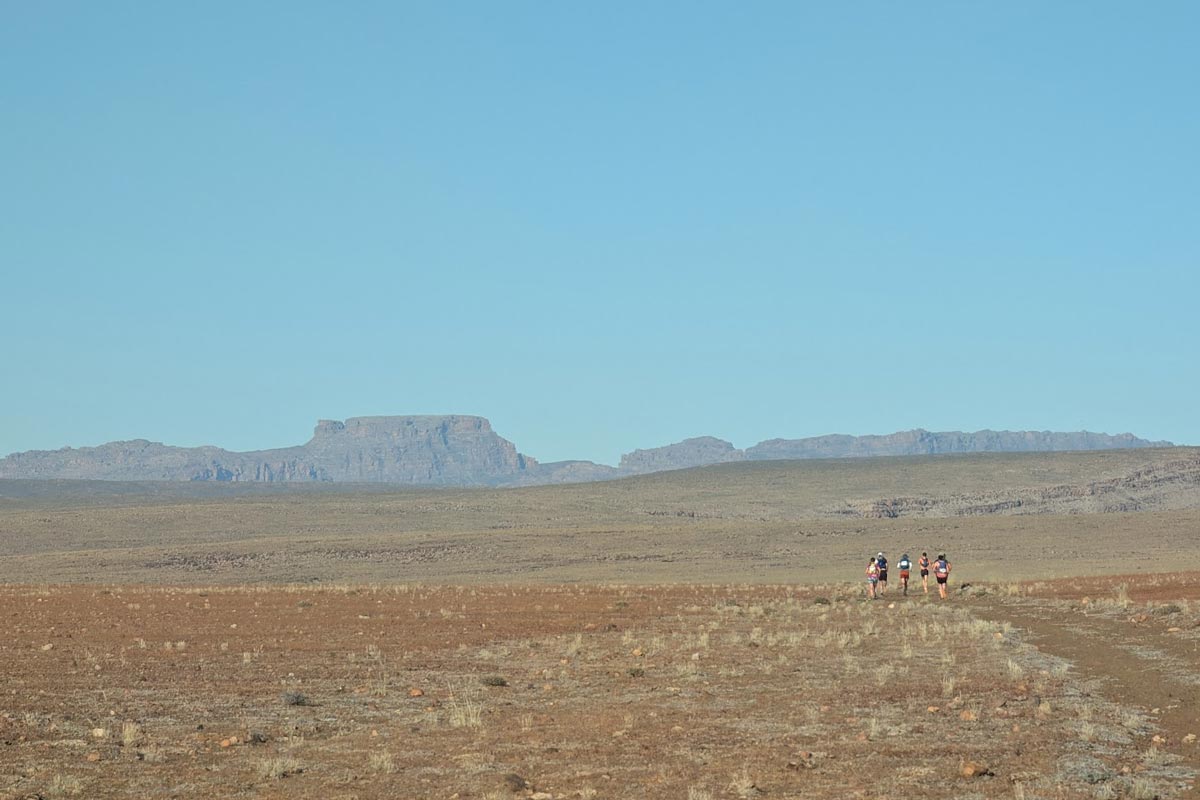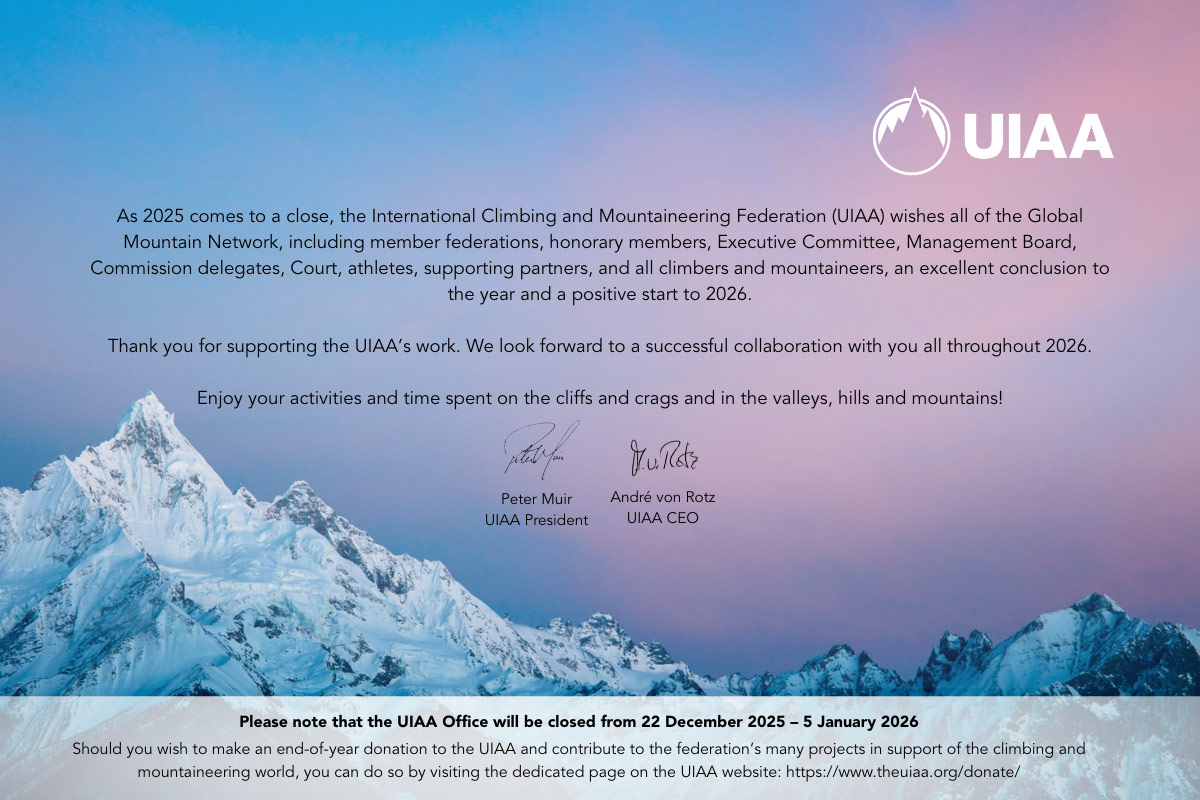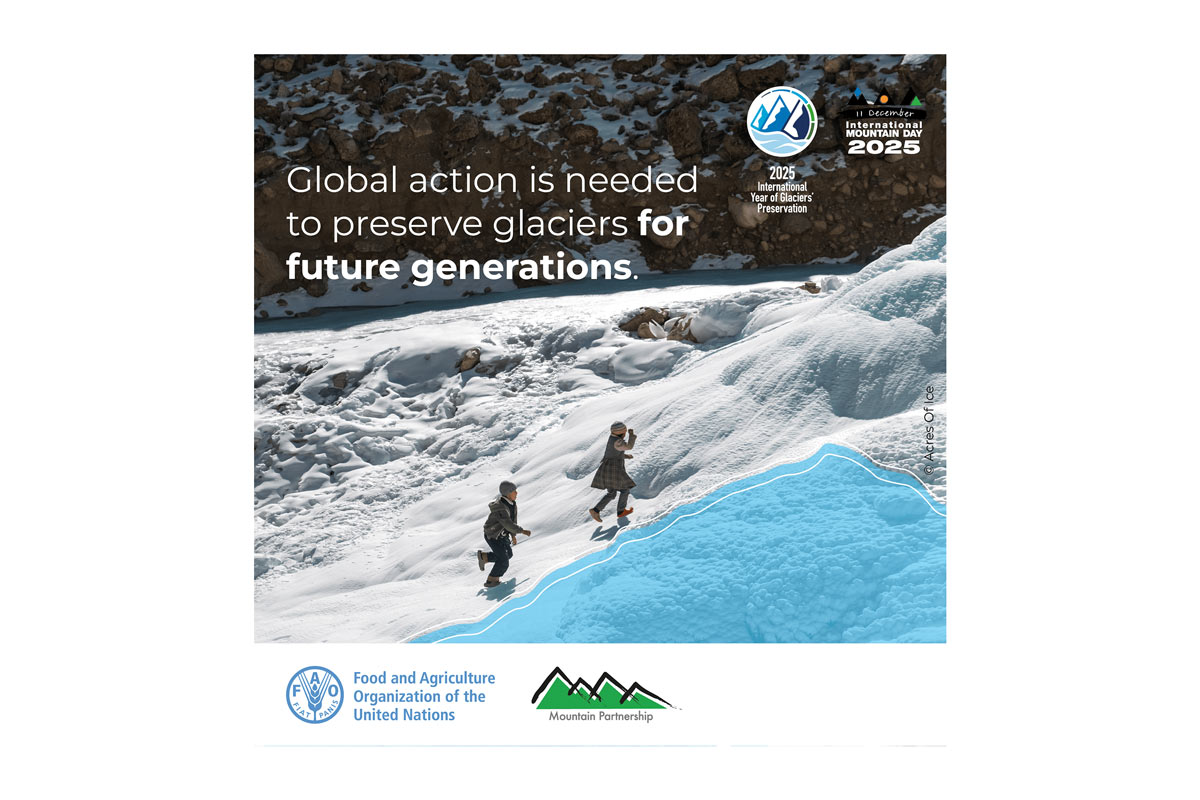The Mountain Club of South Africa’s Walking the Tra Tra project was awarded the 2025 UIAA Mountain Protection Award (MPA) Best New Initiative prize. The announcement was made at the UIAA General Assembly (GA) held in Peja, Kosovo earlier today.
At the same time, Flagship Shelters for the Environment by UIAA member association Fédération française des clubs alpins et de montagne (FFCAM) was announced as the winner of the 11th edition of the MPA.
A total of 20 international projects operational on five continents and in 19 countries were showcased as part of 2025 MPA nominee list. While two prize winners were confirmed at the General Assembly, the official award ceremony will take place in 2026, specifically at the Alpine Museum in Bern, Switzerland held 23-24 October and jointly to the ceremony of the King Albert I Foundation’s Mountain Awards.
As of 2025, the MPA functions on a two-year cycle with one year being an adjudication and award year; with the alternate year having a focus on community building and associated knowledge sharing. The MPA Award is sponsored by presenting partner Lenovo and Altezza Travel as supporting partner.
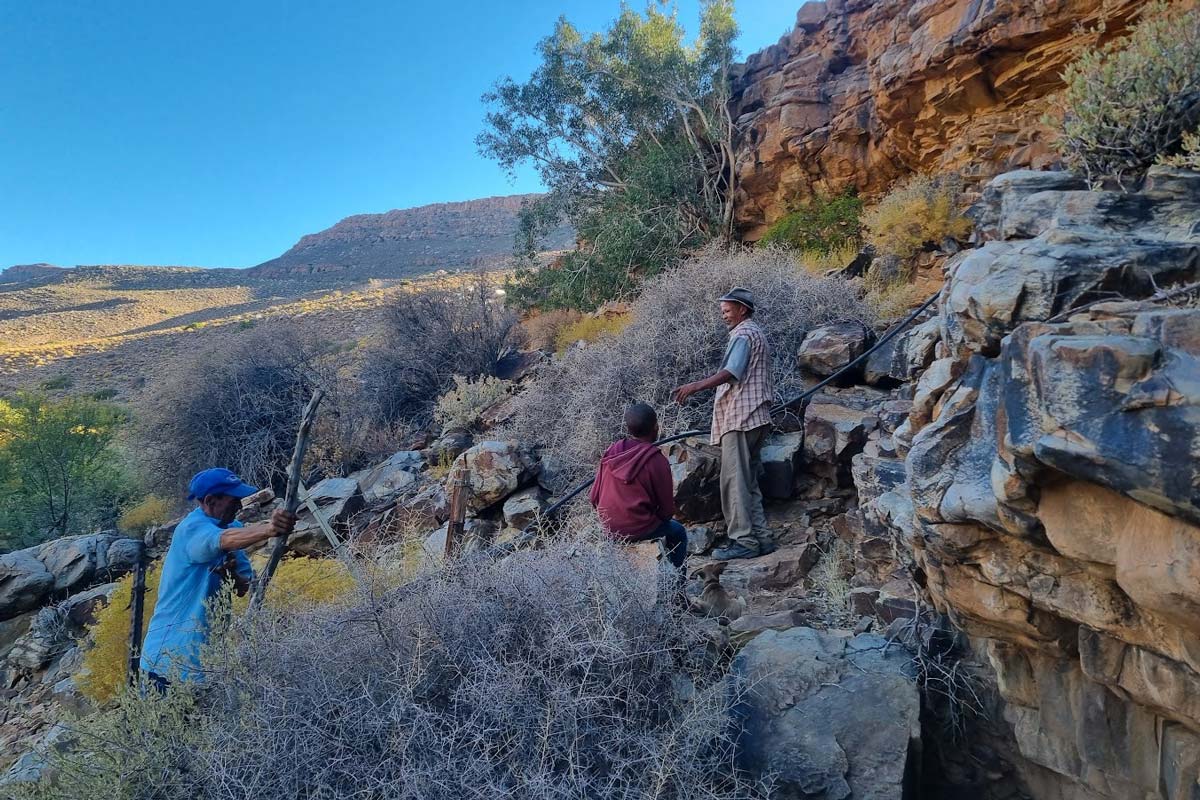
Photo credit: MCSA
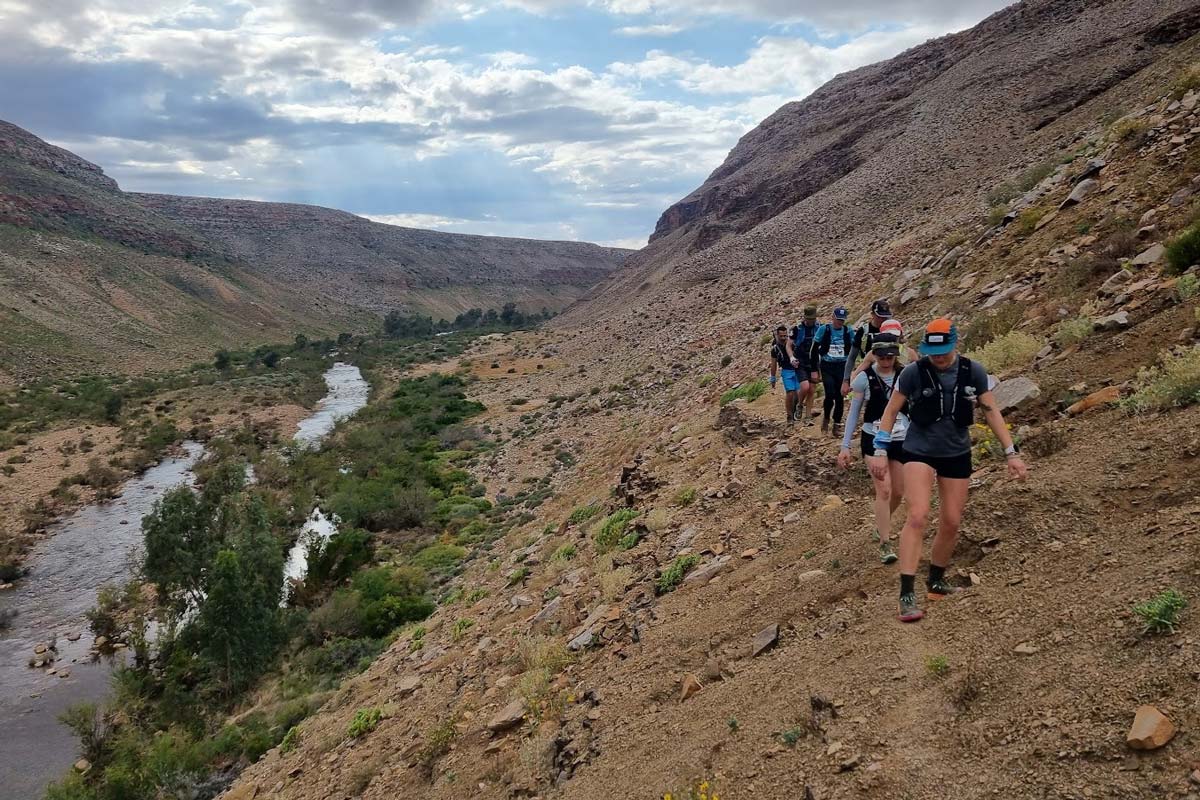
Photo credit: MCSA
About Walking the Tra Tra
The project is rooted in the Cederberg mountains located approximately 300km north of Cape Town and in the Tra Tra valley. Walking the Tra Tra brings together mountain sport, environmental care, and support for local cultural expression. The project is built through direct collaboration with Cederberg residents, local youth, and partnering landowners. By responding to community needs the initiative strengthens land-based livelihoods and helps grow eco-tourism opportunities in a way that honours the vision and requests of those who live there.
The project bridges two dramatically contrasting landscapes in South Africa: the vast, arid expanse of the Tankwa desert, stretching for hundreds of kilometres, and the lush, water-rich Tra Tra valley, which winds its way upward toward its source – the Cederberg mountains.
“This is no doubt a big project in a remote country. The project encourages trail runners and walkers to engage with two special physical and cultural landscapes, to not look at the landscape from afar, but to be part of it. This builds awareness and personal experience of the need for sustainability and of changes being wrought by climate change, such as impacts of drought on local Indigenous people.”
– UIAA Assessment Team
Discover more on the project via the Walking the Tra Tra showcase website page.
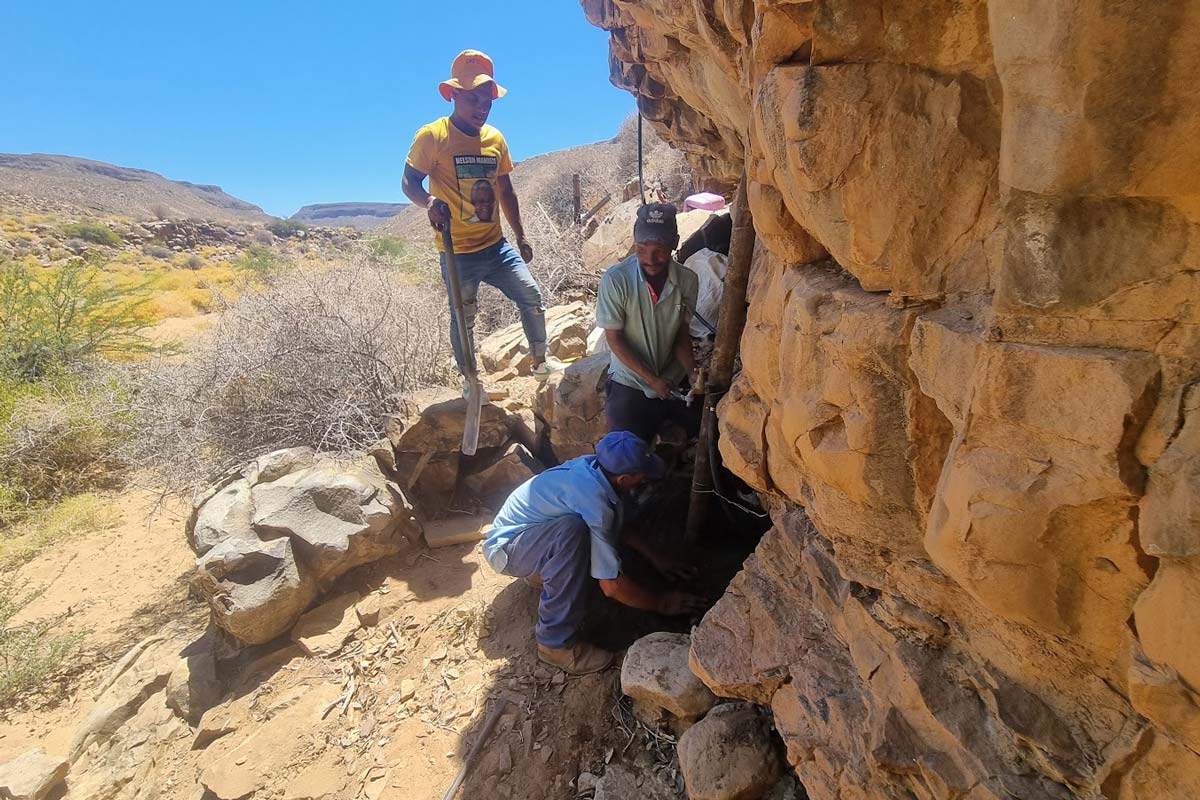
Photo credit: MCSA
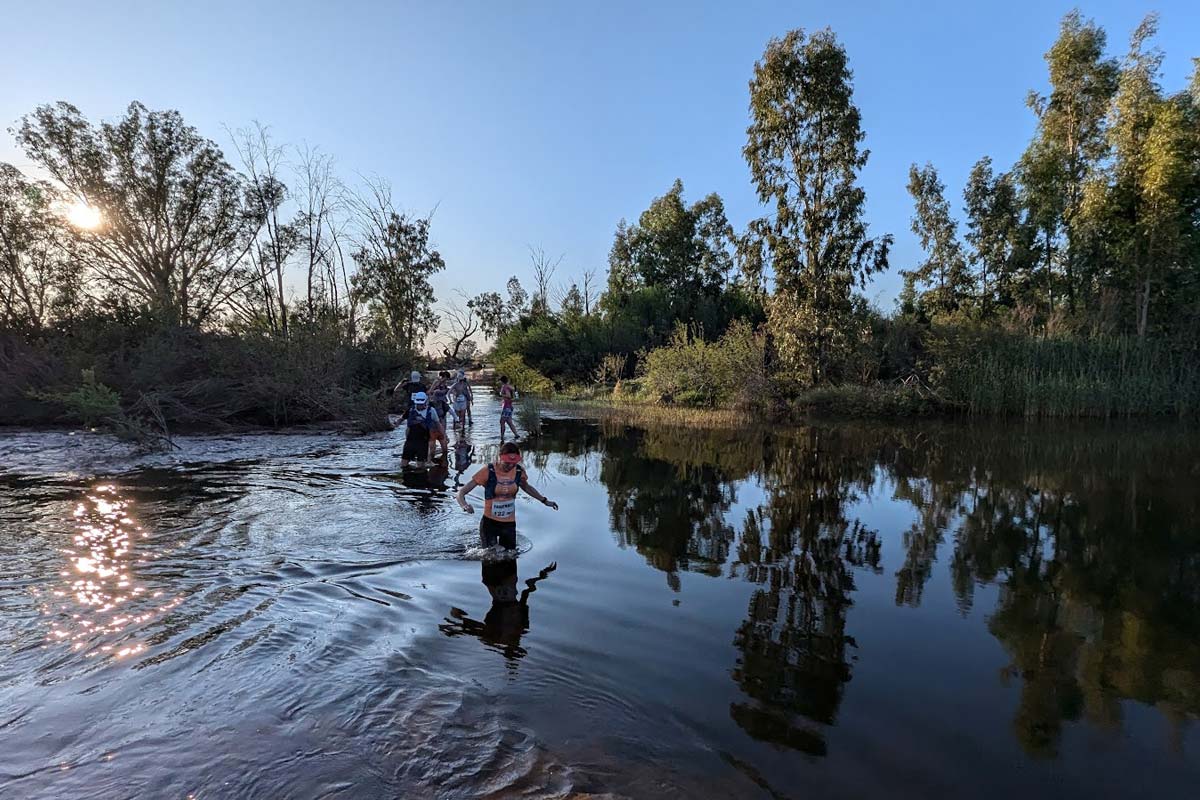
Photo credit: MCSA
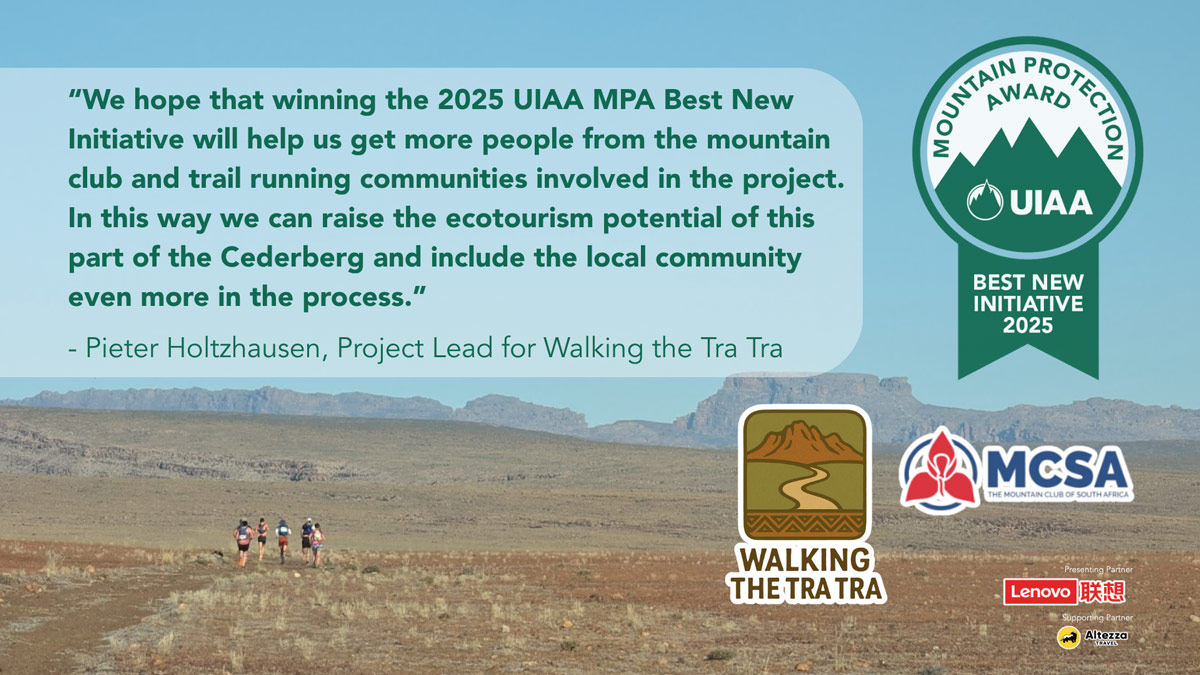
To mark the occasion, the UIAA spoke to Pieter Holtzhausen, Project Lead for Walking the Tra Tra.
UIAA: How was the project conceived?
Walking the Tra Tra: The Cederberg is a magical range of mountains. What I have come to learn is that mountains are not only a collection of rocks, wildlife and rivers but the magic flows right into and through the people who live in them. And whose ancestors have done so for millennia. Walking the Tra Tra was born from the desire to combine the experience of moving through mountains with the experience of connecting with the people and cultures that live in them.
What have been the biggest challenges you have overcome so far? And what are the biggest challenges you expect to face?
Not everything always goes according to plan. Rivers can flood, vehicles can break down in remote areas and people who come from different cultural backgrounds sometimes see things differently. This project has taught me the importance of staying unattached to rigid outcomes. And instead trusting that with good intention, effort, listening and collaboration the results can even exceed our expectations.
What inspired you to apply to be part of the UIAA MPA showcase? What did you hope to get out of the experience?
This project is a grassroots amalgamation of many smaller initiatives expressing a common vision. Applying to be part of this showcase have gave us a way to weave these efforts together into a more structured and unified approach. This will give a good foundation for more volunteers and participants to join in our future efforts.
What benefits do you hope winning the UIAA Mountain Protection Award Best New Initiative for 2025-2026 brings?
We hope this recognition will help us get more people from the mountain club and trail running communities involved in the project and to visit the Kloof (‘valley’). In this way we can raise the ecotourism potential of this part of the Cederberg and include the local community even more in the process.
Your project has been built through direct collaboration with different entities. For other projects seeking to do the same, what advice would you give in terms of working with different stakeholders and groups, and perhaps sometimes different opinions and approaches to a topic?
When coming into a landscape to work alongside the people that live in it, it is important to remain conscious of your role as an outsider. We all bring our own biases and expectations. Your vision of how things should be might not align with the community’s vision, so it is essential to listen and align to community input. That principle sits at the very heart of Walking the Tra Tra.
A key line in your project description reads ‘Walking the Tra Tra is a long-term investment in people, place, and the stories that bind them.’ What are the next steps in this journey, say over the next 12-24 months?
Our next steps include expanding our community engagement with the surrounding villages and aligning how ecotourism opportunities can benefit them as well. We are also arranging a few trail running and mountain club meets in the area to do some connecting, trail exploring and route rehabilitation.
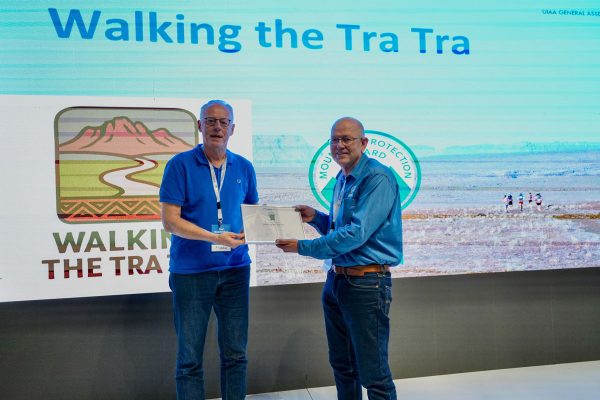
How do you plan on engaging the trail running and climbing communities to come and experience what you have set up? And how will you define the experience as being a success? Will you run some kind of initial ‘workshops’ with groups of trail runners?
We are planning some longer distance trail routes that will appeal to the ultra running community and intend to collaborate with local guides to reveal hidden gems and cultural ways of living that only they know. We will host volunteer meets and exploratory runs of these routes to get a bit more foot traffic into this beautiful valley.
Success for us would mean that what we leave behind is both sustainable and in line with the vision of the communities. Serving the landscape, the Tra Tra river and the people who call it home.
Although this project has a vast scope and a long-term vision, are there plans for the MCSA to adopt this model across other perhaps geographically smaller-scale projects?
The Mountain Club of South Africa runs an inspiring Community Project that connects people with no access to nature with the great outdoors. What we have here can be a wonderful inversion where communities that live in full contact with nature can connect us to their ways of seeing the world. This creates great ecotourism opportunities and encourages stewardship of the wild. It embodies the spirit of South Africa’s coat of arms “!ke e: //xarra //ke”, in the language of the First People who live in these mountains, that means “Diverse people unite“.
Further Reading
Abou Walking the Tra Tra
Project website
2025 MPA Nominee Showcase
Presenting Partner

Supporting Partner


